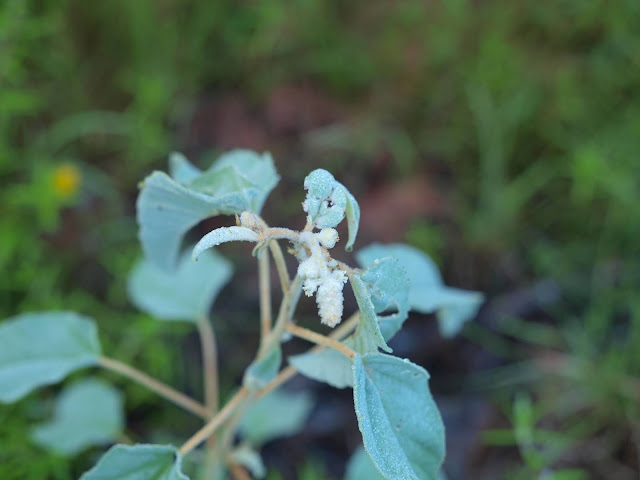Cat's Ear or Flatweed false dandelion
Catsear, Cat's Ear or Flatweed? Or you could call it a false dandelion. I mistakenly called it a coreopsis for a while, until I saw the seeds. The actual Latin name for this plant is Hypochaeris radicata,
It is listed as an invasive weed in the Northwest of the United States. It doesn't surprise me to find it here - we have things that are 'supposedly' growing all over. And there is always the chance it could be just a slightly different variety that no one pays much attention to here. After all, very few people go examining their roadside weeds with such detail. It grows freely in the meadow between the road and the neighbor's property. I can remember seeing it in that particular area for the past ten years - but not in very many other places around the county. I've seen numerous bugs and small butterflies attracted to it.
It is such a bright lemon yellow it would be hard to miss it!
At first sight you might be whizzing by the road and see this small
thin-stemmed nodding plant and think 'dandelion.' It very much
resembles one, although smaller, and with long thin stems that have none
of the common 'milk' you would find in a dandelion stem. But, if you
get up close you will see that the center has small black dots and a
radiating pattern to the petals not quite like a dandelion at all. But,
if you look for the seeds, you will see a very dandelion-like
collection of fluffy tufts with tiny brown seeds attached to the
bottom. You could pick one up and blow - sending the little seeds
floating along on the wind.
In the meadow, fine - spread those seeds around. But, think twice if you find it in your green lawn. Some places consider it a noxious weed, mostly in the Northwestern United States.
One of the most identifying features of the plant are the forked, hollow stems. However, as I noted, they don't have the 'milk' in them like the dandelion. Instead, they are reedlike and a little tough to break.
Another good identifying feature of the plant are the slightly lobed and 'wavy' edges to the leaves. They do not resemble dandelion leaves or come up from a central 'rosette' the way dandelions do.
How long do catsear seeds take to germinate? I guess we will find out. I've put some into this moisture box. I will be checking on it and keeping it moist for the next few weeks.
According to Wikipedia : "All parts of the catsear plant are edible; however, the leaves and roots are those most often harvested." It can be a danger to horses if eaten in excess.
Also, according to Clemson University, College of Agriculture
the main time to mow this weed is NOT during the time it is flowering. That will spread the seeds far and the taproots go deep. So, if you are looking to remove it from your lawn, try to get it before it flowers.
But the birds and butterflies here enjoy it - so we just leave it alone and occasionally admire it.
Sources:
https://hgic.clemson.edu/weed-of-the-month-common-cats-ear/
https://en.wikipedia.org/wiki/Hypochaeris_radicata







Comments
Post a Comment